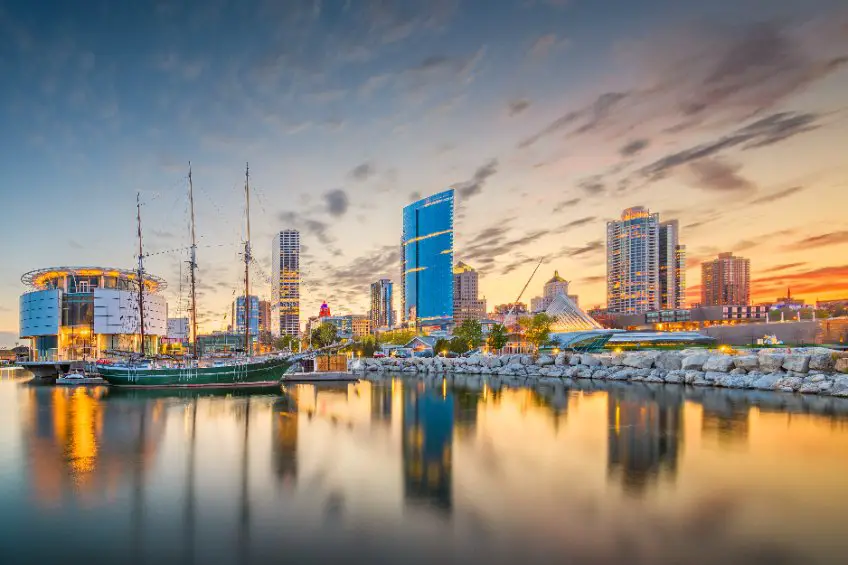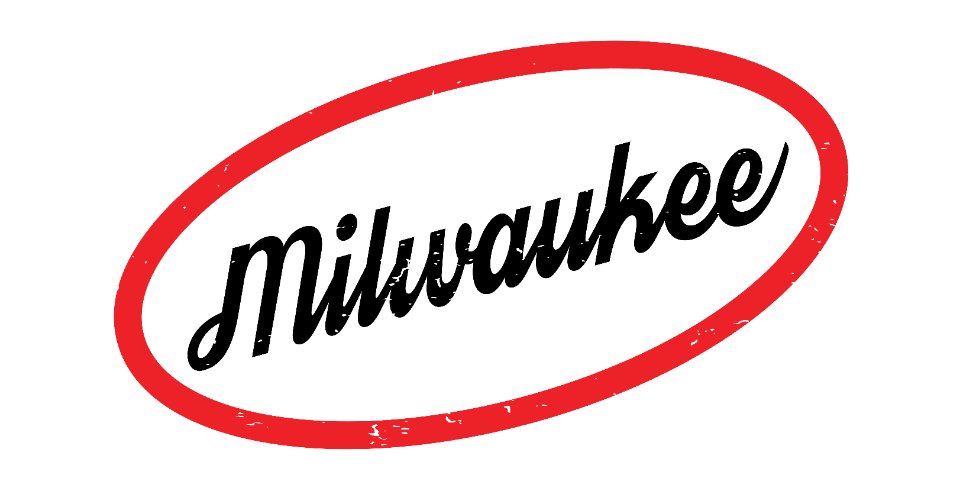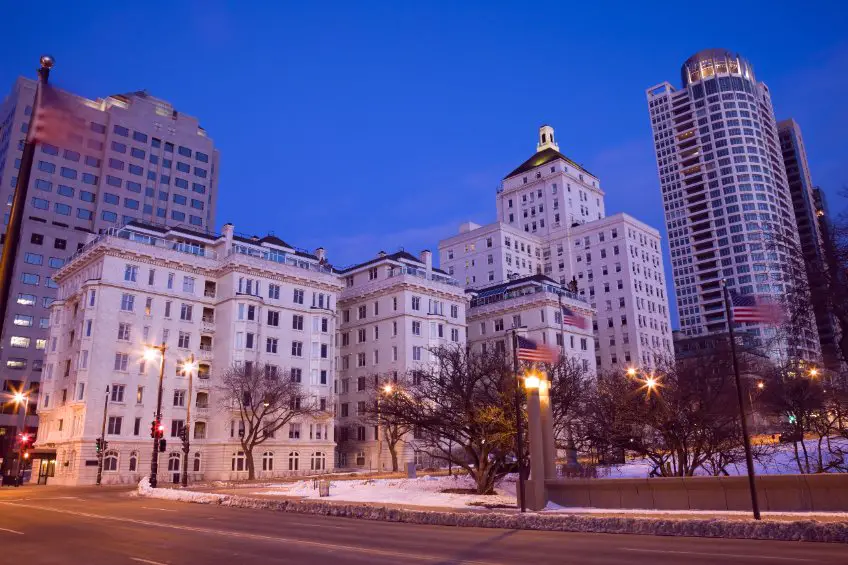
If you are planning on moving to Milwaukee, you may want to know whether or not you will fit in the political landscape there. In this article, I’ll let you know if and just how much Milwaukee is a liberal city.
Milwaukee is a significantly liberal city and has been for many decades. Even when the rest of Wisconsin has voted for Republican candidates, Milwaukee has consistently voted for Democrats in the case of almost every major and minor election in both recent and past years.
The specifics of Milwaukee’s political climate are interesting. If you want to get a more in-depth idea of where Milwaukee stands, read on to find out all about it!
Milwaukee’s Historical Political Landscape
Milwaukee has had four major distinct political eras over the course of its history. These eras are as follows:
First, a Democrat-controlled system from the 1840s to the 1870s. This was facilitated by the largely German population of the city, dubbed “48’ers”.
Second, a two-party system featuring intense Democrat and Republican rivalry. Though, the city largely supported Republicans for quite a long time, with relatively even elections. This system ended up being the most corrupt out of the 4, however, with an eventual reckoning in 1903 in which many grafts and other violations of public trust were discovered.
The third era featured a mix of Progressives, Socialists, Democrats, and Republicans all competing for dominance. Funnily enough though, ever since 1912, Milwaukee has had non-partisan elections as the result of a combined effort from Republicans and Democrats to prevent recurrent socialist political victories in Milwaukee.
The fourth political era began in the 1960s and is composed largely of a two-party system. This being said, Democrats nearly completely control the city and have ever since 1960.
Milwaukee’s politics have always been relatively interesting, and even now there are several different democratic factions competing for power within the city.
During the Civil War and Reconstruction Era, Milwaukee supported the Republican party, though this support ended with the New Deal.
Like many large cities, Milwaukee has suffered in the past from machine boss politics and corruption. This was ended by the election of a socialist mayor in 1910. Emil Seidel was the first socialist mayor in the U.S. ever. Not only was he elected, but the next two mayors were also socialists. This occurred in spite of the Democrats and Republicans of the city being so panicked about the socialist’s success that they formed a “fusion ticket” backed by both parties simultaneously.
Milwaukee was home to a movement called “sewer socialism” for quite a long time (of which the previously mentioned socialist mayors were a part of), one which de-emphasized the revolutionary aspect of socialism but emphasized public betterment through the development of better public works and such.
The main source of support for the party came from the working class, whereas the middle-class people living in Milwaukee supported more progressive policies but within the Republican and Democratic movements. The social democratic party lost power for many years leading up to the 1980s however, leading to the rise of the overwhelmingly predominant mainstream Democratic party. Milwaukee has also hosted a Communist convention in the more recent past, interestingly.
Notably, Milwaukee was also home to a chapter of the Black Panther party and served as a critical part of the civil rights movement. Many of the community organizations founded as far back as the 1970s such as the Hunger Task Force are still around today.
Although Milwaukee has technically non-partisan elections, everyone knows beforehand whether or not a candidate leans a certain way based on their previous political careers and previous and current party alignments. This has done nothing to really dissuade political strife within Milwaukee.
In fact, the entire purpose of the non-partisan election tickets was to prevent socialist candidates in Milwaukee from gaining traction, which clearly did not work given the unique success of these candidates in Milwaukee, when compared with the rest of the country. This being the case though, the non-partisan tickets have remained.
In more modern politics, one of the biggest challenges facing Milwaukee Democrats has been their struggle with the Democratic Party chapter in Madison for control of their party in their state. Madison is perhaps even more liberal than Milwaukee, and of course, harbors the advantage of being the state’s capital.
Current Milwaukee Political Climate

Milwaukee is extremely consistent in its support for democratic party candidates. In every single election since 1960 for Governor of the state, Milwaukee has backed the Democratic party candidate, and the city has voted for only Democratic presidents as well. In the most recent election, Biden won 194,646 of 243,059 votes, with Trump receiving a measly 48,413 votes in comparison. An 84% for Biden versus 14% for trump, which in many areas would be considered a landslide margin, but in Milwaukee it is just par for the course.
In terms of where Milwaukee is heading now, it is interesting to note that Milwaukee County had a higher turnout in 2020 than it did in 2016, and also voted even more overwhelmingly blue in 2020 than it did in 2016. Even outside of the city of Milwaukee itself, Milwaukee county tends to vote blue, but not by an overwhelming margin due to a few Republican strongholds north of Milwaukee.
In terms of gubernatorial elections, Tommy Thompson was the last Republican to win over Milwaukee, all the way back in 1986. This paints a pretty poor picture for any Republican or just conservative in general looking to win some votes for governor in the city.
The city government is much more liberal than the county government even. Tom Barrett, a democratic politician, served as the Mayor of Milwaukee from 2004 to 2021, which is an incredibly long amount of time for successive re-elections. The current Mayor, Cavalier Johnson, is unaffiliated with either the Democratic or Republican party in Wisconsin and has always run in such a way. His primary platform has been one with a focus on making the city safer, including cracking down on reckless driving in the city and reducing violent crime.
Recent political movements such as Black Lives Matter have also found support in Milwaukee, with protests having been held for over a year in the wake of the BLM group’s creation and explosion in interest. Milwaukee has had an interesting history of political activism, with one of the most famous activists of the past being James Edmund Groppi, a Roman Catholic Priest who led numerous civil rights protests.
Milwaukee’s Importance in Elections
Milwaukee county is one of the biggest reasons that Wisconsin as a whole is a pivot state. Depending on the comparative rural/urban turnout in Milwaukee county during elections, it swings both ways, but the city of Milwaukee always votes in a liberal direction. The contest is really between Milwaukee and its outlying communities.
Notable Exceptions
While Milwaukee almost always votes blue, there have always been a few exceptions.
One of the biggest of these exceptions is the case of former county Sheriff David Clarke. He served as the Milwaukee County Sheriff for 15 years, which is incredible given the fact that he never joined the Wisconsin Democratic Party and aligned himself with conservative politicians. He even went on to support Donald Trump in 2016.
Milwaukee’s Suburbs

The majority of Milwaukee’s suburbs also consistently vote for Democratic party candidates, with a few notable exceptions, including Mequon (the third-largest city in Wisconsin), Brookfield, and Cedarburg. Shorewood, located directly North of Milwaukee, is even more liberal than the city of Milwaukee itself, with its neighbor of Whitefish Bay also being significantly liberal. In general, the further out from Milwaukee that you look, the less liberal the towns become as the areas become more rural.
This is something that Democratic leaders in the state of Wisconsin have been trying to change in recent years, however. It remains yet to be seen how successful they will be. In general, Wisconsin is pretty moderate, with most counties only turning deep red in recent years.
Looking Forward
While Milwaukee has been staunchly liberal for decades, that does not necessarily mean that no one in the city votes the other way. Something interesting to note is that Milwaukee is potentially going to host the 2024 National Republican convention. This, however, has been contested by many different liberal groups in the city seeking to prevent such a thing from happening.
So although the city has gone ahead and approved the potential use of the city, largely in the interest of it being an economic revenue generator, the push-back itself has demonstrated the uniquely liberal nature of the city.
However, it would appear that the city government is not quite so liberal as to oppose a potential 200 million in revenue and the opportunity for a huge number of reporters to bring attention to the town. Looking forward, Milwaukee will likely remain liberal for a long time, if not forever, though it is impossible to say for certain whether that will be the case.
Related Topics:
If you like the article above, here are some other similar articles you should check out!
13 Best Family Neighborhoods in Milwaukee, Wisconsin 

